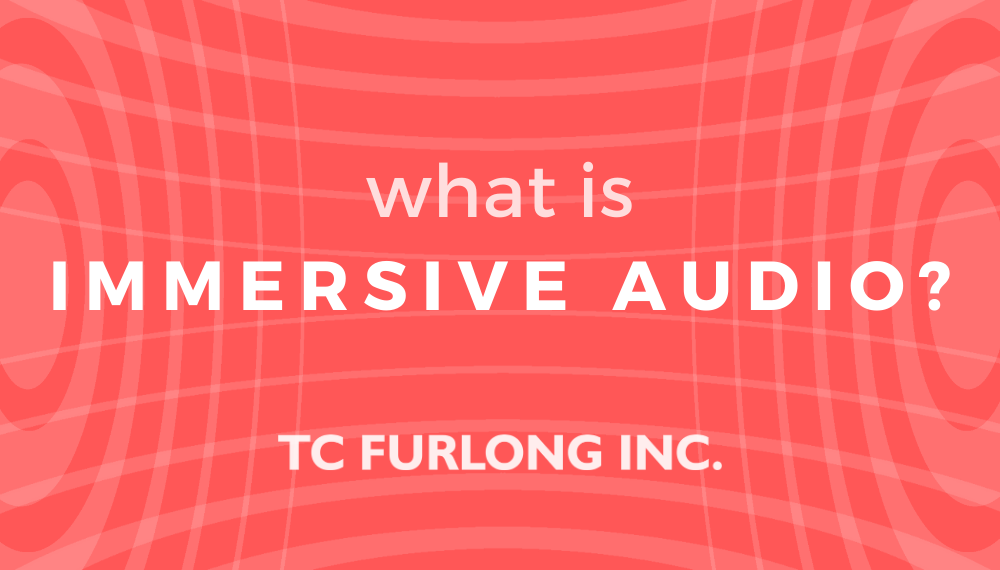
Immersive audio (also called 3D audio, 360° sound, spatial sound, among others) is one of the fastest growing areas of innovation and experimentation in the live sound industry. Just about every major loudspeaker manufacturer has made forays into developing immersive audio technologies; as those solutions become more affordable and widely available, we’ll see them implemented in venues of all shapes and sizes. But what exactly is immersive audio? How does it differ from traditional loudspeaker systems? In this article, we’ll give an overview of this emerging technology.
When most of us read “immersive audio,” the first connection we make is likely to surround sound. Just about everyone has heard a surround sound system, whether at a movie theater or in their own home. While a traditional X.1 surround sound system allows a mix engineer to pan sounds around the audience in the horizontal plane, an immersive audio system with the proper loudspeaker deployment allows the engineer to position tracks in the vertical plane as well, allowing for ‘3D’ audio that the listener perceives as coming from any number of points around them in physical space.
It’s also important to note that immersive audio systems don’t have to be used strictly in surround-style deployments; traditional Left/Right or LCR loudspeaker hangs can also benefit from immersive audio technology. In live performance applications where a realistic soundscape is desired, immersive audio systems allow you to localize sound sources more precisely than typical stereo panning and delay. When done properly, the audience will perceive the sound as coming directly from the performer on stage, effectively masking the fact that any sound reinforcement is happening at all.
How are these results achieved? As with most emerging technologies, the terminology used to describe immersive audio systems can vary pretty wildly between manufacturers. However, the phrase “object-based mixing” is a common thread across most platforms. In object-based mixing, an engineer can place a sound “object” (which could be an individual audio track or a stem of multiple tracks) within a virtual 3D environment represented within the chosen software. A system processor then runs the information from the software through a complex digital matrix to ensure the right level of each audio source is sent to each loudspeaker with the correct delay times. In turn, the listener will perceive the sound source as coming from a specific point in space around them.
While most immersive audio systems require the use of a special system processor that’s purpose-built for immersive applications, strides have recently been made to allow for immersive audio mixing using existing platforms. Meyer Sound’s new Spacemap Go software utilizes the processing power of their existing Galileo GALAXY processors. This means that the hundreds of venues around the world that already utilize the GALAXY platform for system processing now have access to immersive audio mixing with Spacemap Go via a completely free update. “Spacemap Go now gives users an affordable, scalable, and flexible path into immersive audio without compromising the features needed in a live production environment. This new tool works with any loudspeaker arrangement for any live audio application, including live mixing,” according to Meyer Technical Support Specialist Josh Dorn-Fehrmann.
The possible applications of immersive audio technology extend to all corners of the live sound world. In theatrical performances, where small loudspeakers might previously have been hidden in scenery, sound effects can now be pinpointed anywhere on the stage. A classical musician can perform a solo that the whole audience can hear clearly, without realizing that a loudspeaker system is in use at all. In pop music performances, the sounds of instruments and effects can swirl around and over the audience in ways that weren’t previously possible. “Immersive audio provides a much broader canvas and tools for the mixer to use. There is a learning curve when coming from a stereo/mono world. We have to rethink and relearn,” says Dorn-Fehrmann. “It is up to the immersive system manufacturers to make this transition as comfortable and elegant as possible.”
As immersive audio systems become more widespread, and as manufacturers continue to push the boundaries of what’s possible with these systems, audiences will experience the work of their favorite artists in brand new ways. This modern day frontier of live sound technology will continue to be an exciting space for innovation in years to come.
Are you interested in the possibilities an immersive audio system would bring to your venue? Our loudspeaker system Design & Alignment team have decades of experience, and can work with all major loudspeaker manufacturers to design the perfect system for your space. Email align-design@tcfurlong.com today with questions.